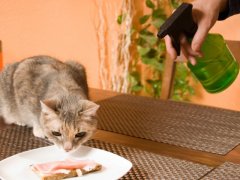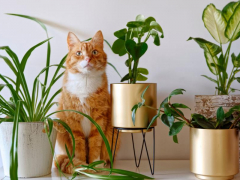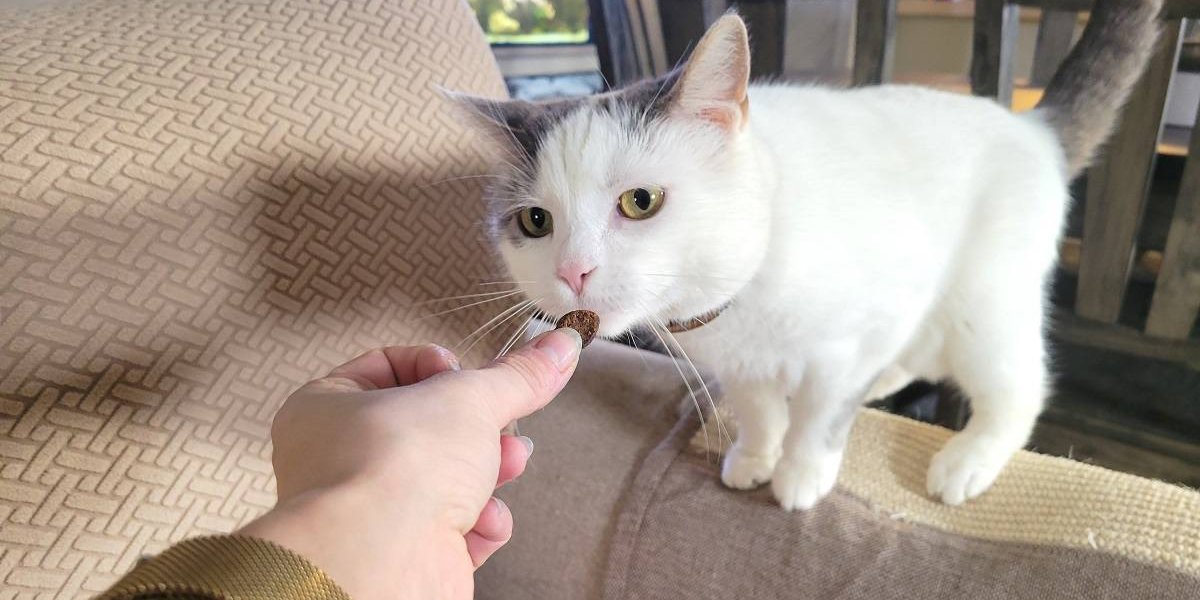
Kate Barrington / Cats.com
While treats can be used to reward good behavior or to disguise medication, sometimes they serve no other purpose than to make our cats happy. But how many treats is too many?
Unfortunately, there’s no easy answer. According to our vet experts, it depends on the type of treat you’re offering, and even then, the magic number varies from one cat to another.
In this guide, we’ll discuss the role treats play in a nutritionally balanced diet for cats. You’ll learn how to choose healthy cat treats or, if you’re the DIY type, what to look for in a recipe for homemade cat treats.
Consider the Calories
Dr. Amber Carter, DVM, the owner of CatVetLife, says, “Treats should not comprise more than ten percent of a cat’s diet.” In other words, you might have to do some math to figure out how many treats you can give your cat each day. This rule is designed to make sure the bulk of a cat’s diet is made up of nutritionally complete food rather than treats, which may not provide the correct balance of nutrients.
To start, you’ll need a rough estimate of your cat’s daily calorie intake. Your veterinarian can help you determine your cat’s needs, or you can use an online calculator to get an idea.
The average adult cat needs about 20 calories per pound of body weight per day, though factors such as age, weight, and activity level also come into play. For an average 10-pound cat, that’s around 200 calories a day. Taking 10 percent of that total will tell you how many calories worth of treats your cat can have each day.
Once you know the amount of ‘treat calories’ your cat can have, remember that the appropriate number of treats will vary depending on the specific product you choose. Check the package to determine how many calories a single treat contains, then divide your ten percent total by that number.
Here’s an example of how it works:
My youngest cat, Biscuit, weighs about 9 pounds. Because she’s pretty active, her estimated daily calorie requirement is 240, and 10% of that is 24. If I choose treats that contain 2 calories each, I can give her up to 12 treats a day.
If you decide not to calculate your cat’s ideal calorie intake from treats, stick to low-calorie treats so you don’t accidentally overfeed your cat.
Treats Should Complement Your Cat’s Diet
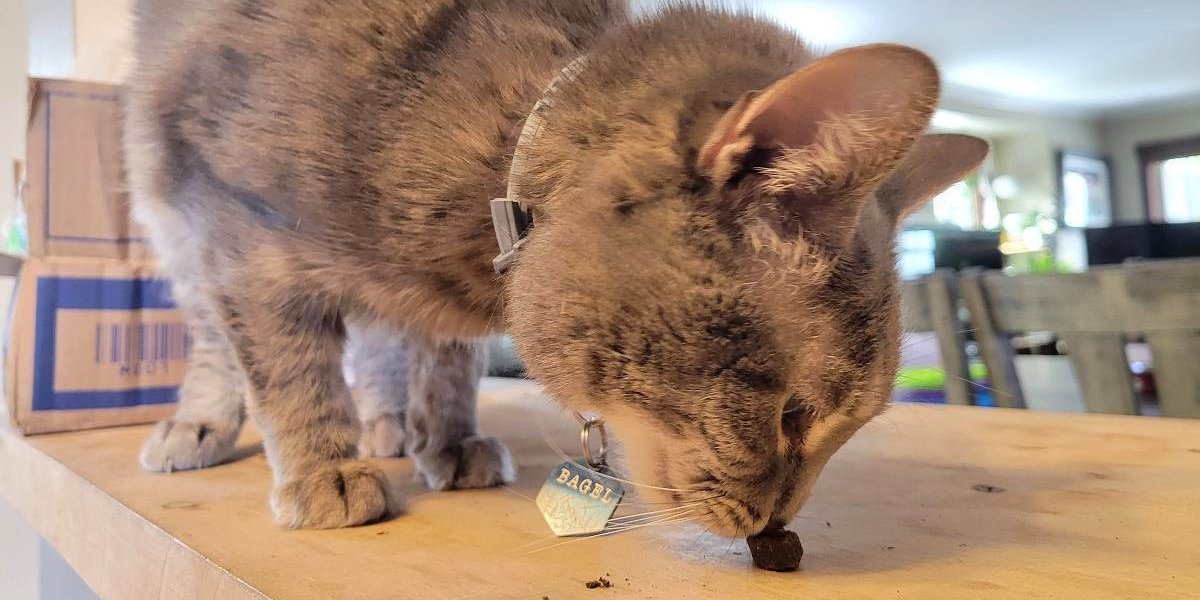
Kate Barrington / Cats.com
Calculating calorie content gives you an idea of how many treats you can give your cat each day, but consider the nutritional impact of cat treats as well. Feeding your cat too many treats or the wrong type of treat could upset the nutritional balance of their daily diet.
Even if you stay within the ten percent recommendation, each treat you offer your cat takes away from their staple diet—cat food that is carefully formulated with the combination of essential amino acids, fatty acids, and micronutrients needed to support optimal feline health.
Healthy cat treats can supplement your cat’s diet instead of delivering empty calories.
The best treats for cats are meat-based. Not only is meat the foundation of an appropriate feline diet, but it’s more appealing to cats than most plant-based foods. Pieces of cooked chicken breast, dried bonito flakes, or even freeze-dried organ meats make good treats for cats.
When shopping for commercial cat treats, prioritize those with animal ingredients over those with plant ingredients. It’s also wise to avoid treats with excessive amounts of fat and those made with artificial additives.
How To Offer Your Cat Treats
Once you know how many treats you can give your cat, you can begin to offer them more intentionally. Carter reminds us, “There should be a purpose every time a treat is given, whether for cat training or rewarding good behavior.”
There’s nothing wrong with giving your cat a little snack to show affection, but Dr. Carter reminds us that “food does not equal love.” She suggests that the best role treats can play in a cat’s life is for training purposes. But they can also be used during playtime or to reinforce desired behavior.
Even something as simple as tossing a treat (or a piece of your cat’s kibble) across the room instead of offering it directly has the benefit of encouraging your cat to exercise. My smallest cat, Munchkin, loves digging treats out from under a blanket or pillow.
How Often To Give Your Cat Treats
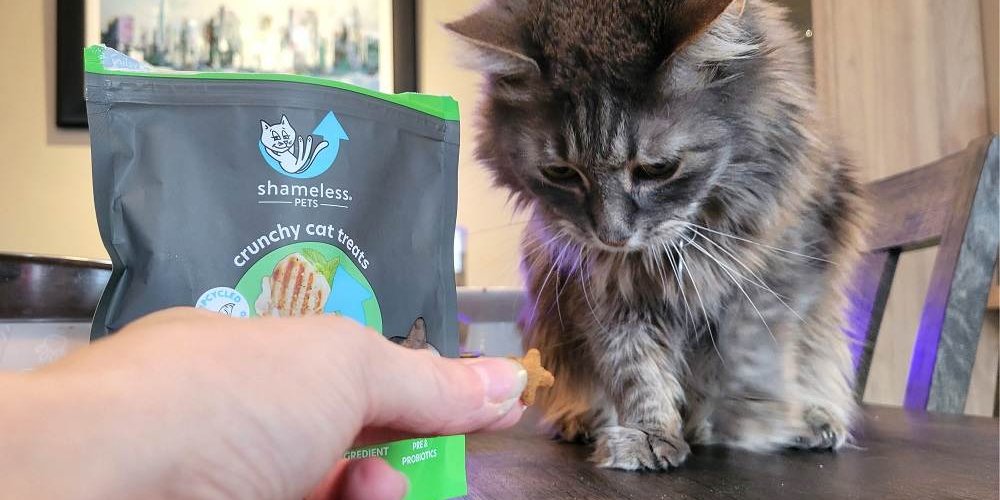
Kate Barrington / Cats.com
There are no hard and fast guidelines for treat portions or how often to offer them. The important thing is to aim for balance. Don’t give your cat treats too often or too close to mealtime if it affects their appetite and causes them to lose interest in their food.
You may not even want to offer treats every day;, especially if you use them for training purposes. If your cat doesn’t get treats every day, they may be more motivated to earn them in training. You can also keep a variety of treats on hand, using some as everyday snacks and others as highly motivating training treats or rewards.
My cats love the catnip flavor of Shameless Pets crunchy cat treats. They’re low in calories, so I don’t think twice about offering them a few at a time. But when I want to reward my cats for good behavior, I bring out the freeze-dried rabbit bites from Vital Essentials.
Homemade Treats for Cats
It’s easy to assess the quality and nutritional value of a commercial cat food product—all you have to do is read the label. With homemade cat treats, however, things are a little more complicated.
Many cat owners make their own treats to save money, but others do it because it allows them to control what their cat is eating. For cats with underlying medical conditions, it can be hard to find commercial treats that complement a therapeutic diet. Homemade cat treats are sometimes the more practical option for cats with certain health conditions.
When browsing homemade cat treat recipes, apply the same principles you would to any cat food product. Here are some things to look for:
- Made primarily with meat (like beef, chicken, or turkey).
- Low in carbohydrates (fresh vegetables are preferable to refined grains or legumes).
- Not excessively high in fat (prioritize protein instead).
- Free from dairy products like milk and cheese.
Always remember if cooking for your cat that certain common human food ingredients and seasonings are toxic to cats, including onions and garlic.
If you want to know the calorie content of your homemade treats, type the ingredients and their amounts into an online nutritional calculator. This may also help you portion the treats appropriately.


